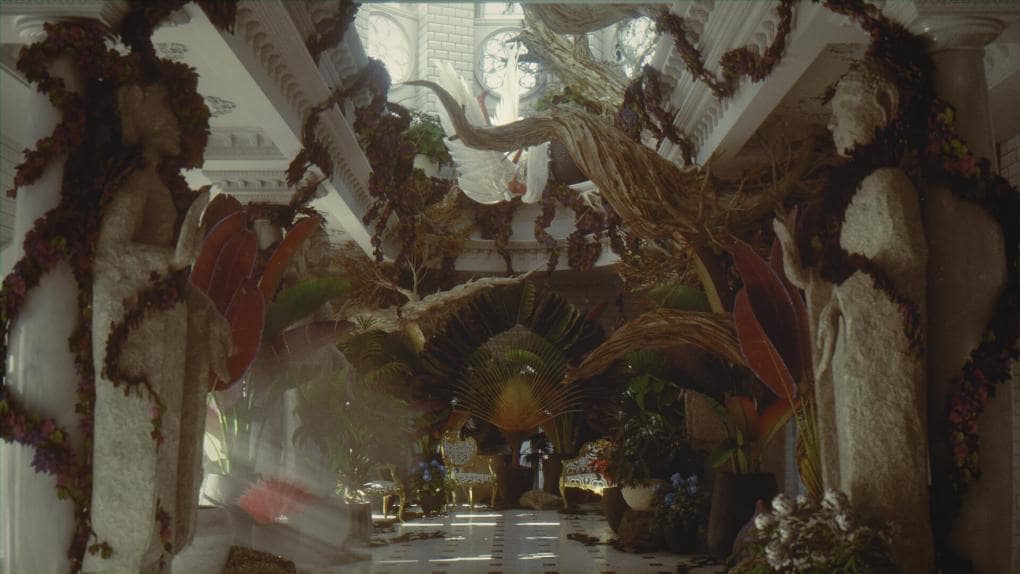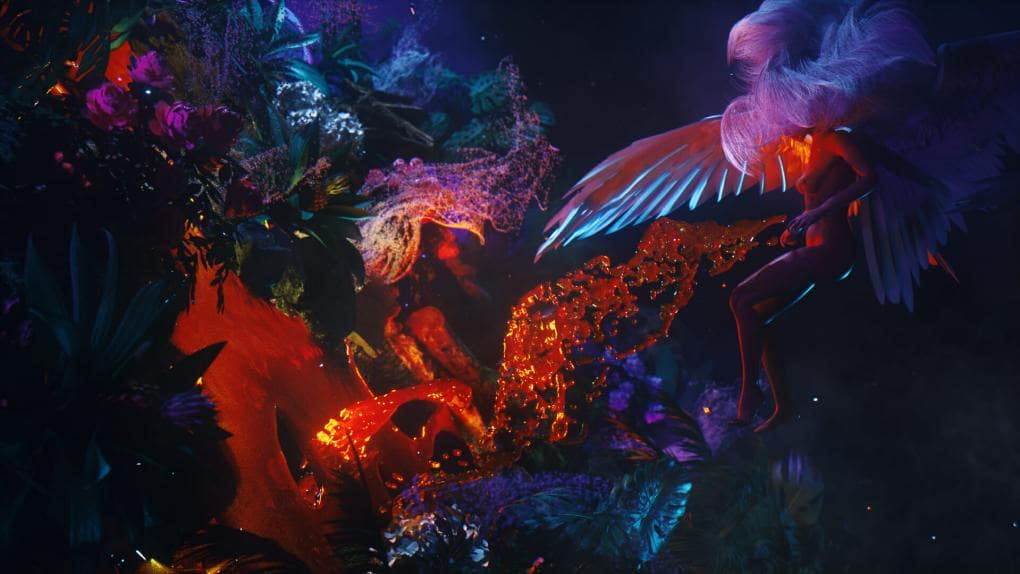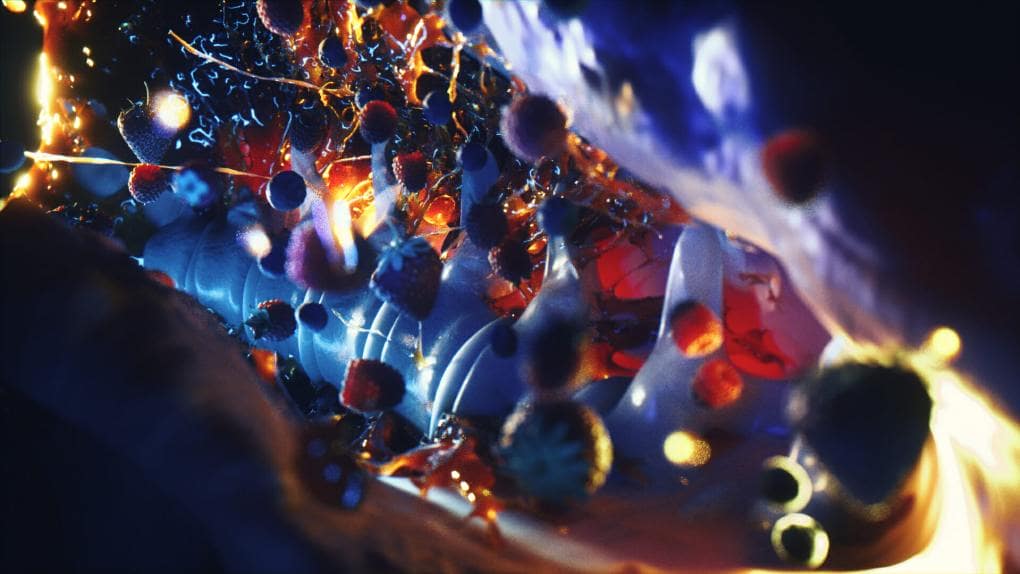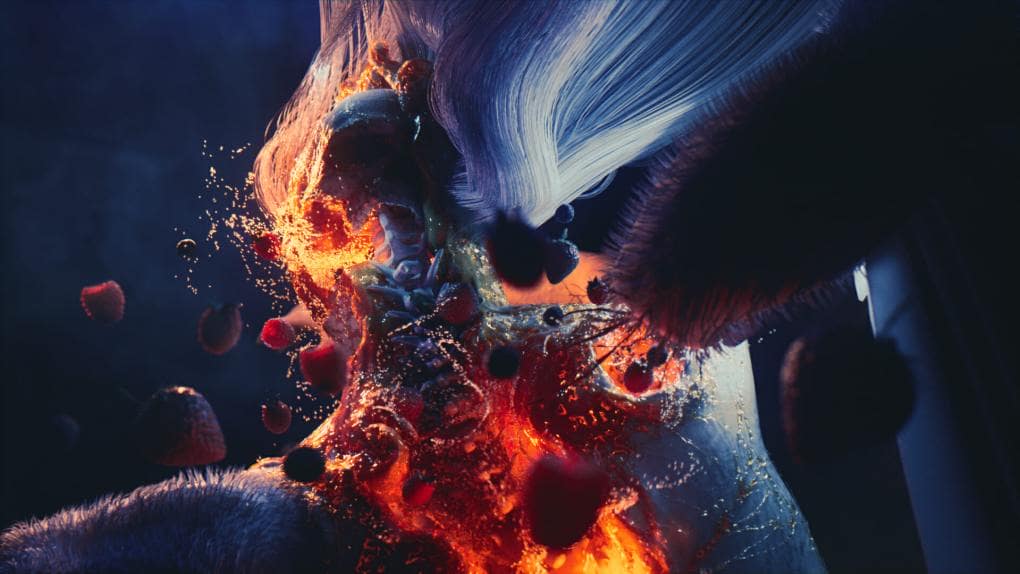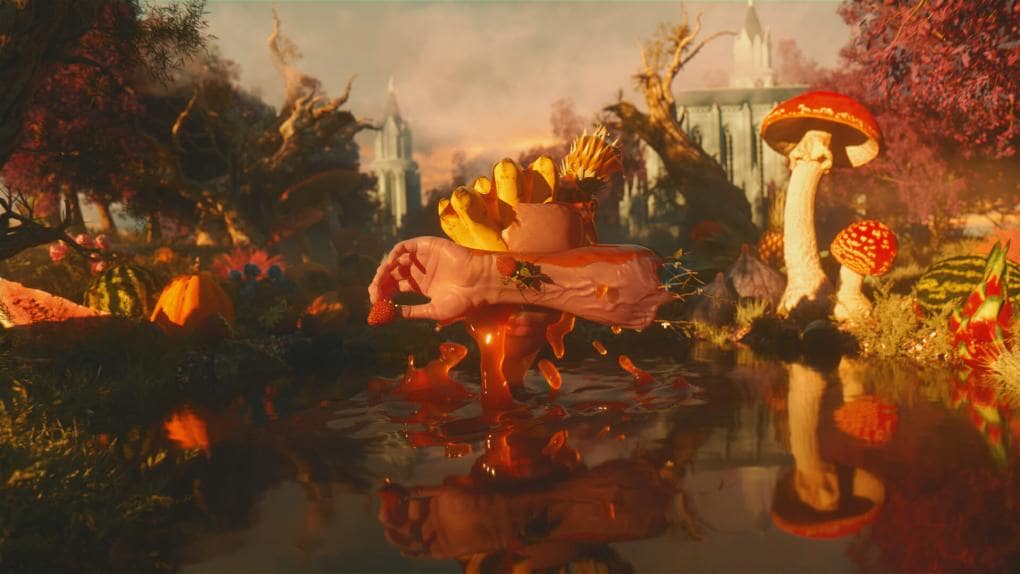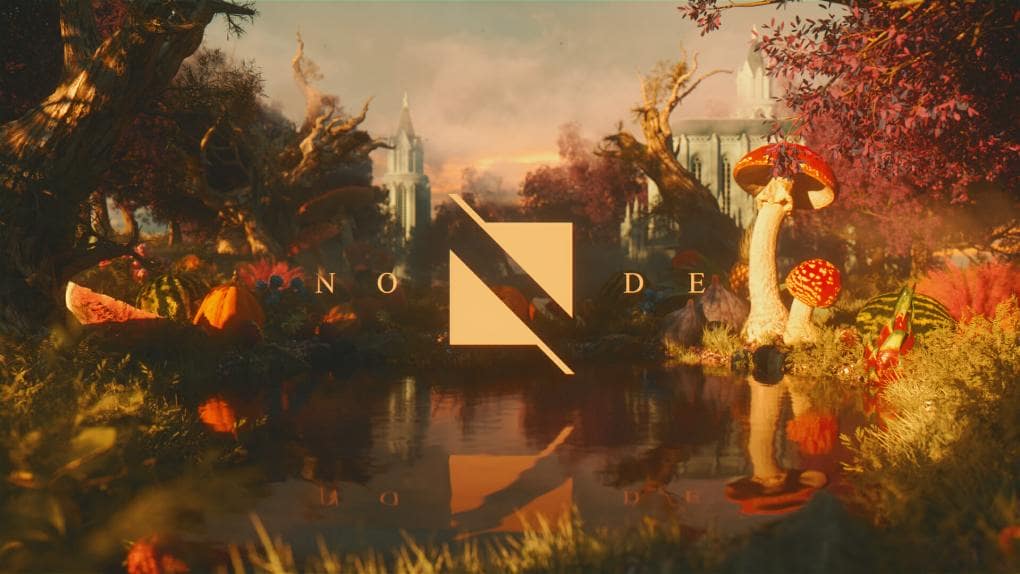In a parallel world where everything that transcends becomes fruity…
Rodrigo Germano’s 2019 Node Fest Ident competition entry is trippy, beautiful, and unexpected. Normally, we just want to look at the trees, but “Fruity” is so immersive we found ourselves watching it over and over again.
This short work is a stellar example of how a few well-crafted models can be creatively leveraged to fill a variety of areas. The same models adorn the sprawling cliffs around the cathedral while also complimenting the tighter spaces, like the crowded courtyard. Be sure to watch Rodrigo’s official entry and breakdown videos below, accompanied by our interview on the process!
Interview conducted by Katly Hong.
Katly Hong (KH): Will you give us a brief summary of who you are, your educational background, and work experience?
Rodrigo Germano (RG): I’m Brazilian—originally from a little town called Bauru. I studied graphic design, then moved to São Paulo for five years working at production companies, advertising agencies, and in television. In 2015, I moved to Melbourne, Australia to progress my career, so I studied English and worked as a freelance motion designer for various animation studios. And now I’m based in Sydney!
KH: Have you participated in Node Fest before? How would you describe the event?
RG: I love that every year, the theme still allows you freedom to branch out and create anything. Node Fest is a brilliant way for me to try different techniques and experiment. It’s my second year that I’ve entered, I’ve made great friendships in the past and really built an inspiring network.
KH: This video is surreal and psychedelic. What led you to the concept of “In a parallel world where everything that transcends becomes fruity?” Is this representative of the work you create regularly or is this a departure from your work as a whole?
RG: The theme was “Fruity!” I wanted to make something offbeat that was more than just the typical animated fruits, plants and people; I wanted to merge them all into this surreal, visual feast.
My usual day-to-day isn’t super crazy, but my imagination can go pretty wild. I love figuring out new approaches to concepts and seeing if I can execute my imagination into something tangible. I think it’s more an extension of than a departure from what I love to do.
KH: What’s your approach to planning and creating something like this?
RG: I brainstorm with notes and drawings, then go into references of forms, colors and visual languages. These dictate the style and elements I use when figuring out my approach.
KH: What portions of the scene include vegetation created in SpeedTree? What part does it play in your workflow?
RG: I used Speedtree with my opening and closing scenes. It was my first time using the software. Basically, the ease in customizing objects to how simple it is to export animated objects. I was really impressed.
KH: Is there anything else you’d like to say about this project that you’re particularly proud of? Were there any particularly difficult challenges to making it?
RG: I’m proud of this work being the final product of an idea that started with fruit. Also, it was my first time using ZBrush—rigging the angel wings and animating the hair to the fine degree I did was a huge complexity for me, and I’m just really happy with the result. This was something personal to me where I could take something from my head and visually translate it; it was more than I expected and I’m glad people appreciate it.
Follow Rodrigo Germano’s work here:
Instagram
Vimeo
LinkedIn
Behance
Inspired by Rodrigo’s “Fruity”?
Evaluate SpeedTree Cinema for free today!

